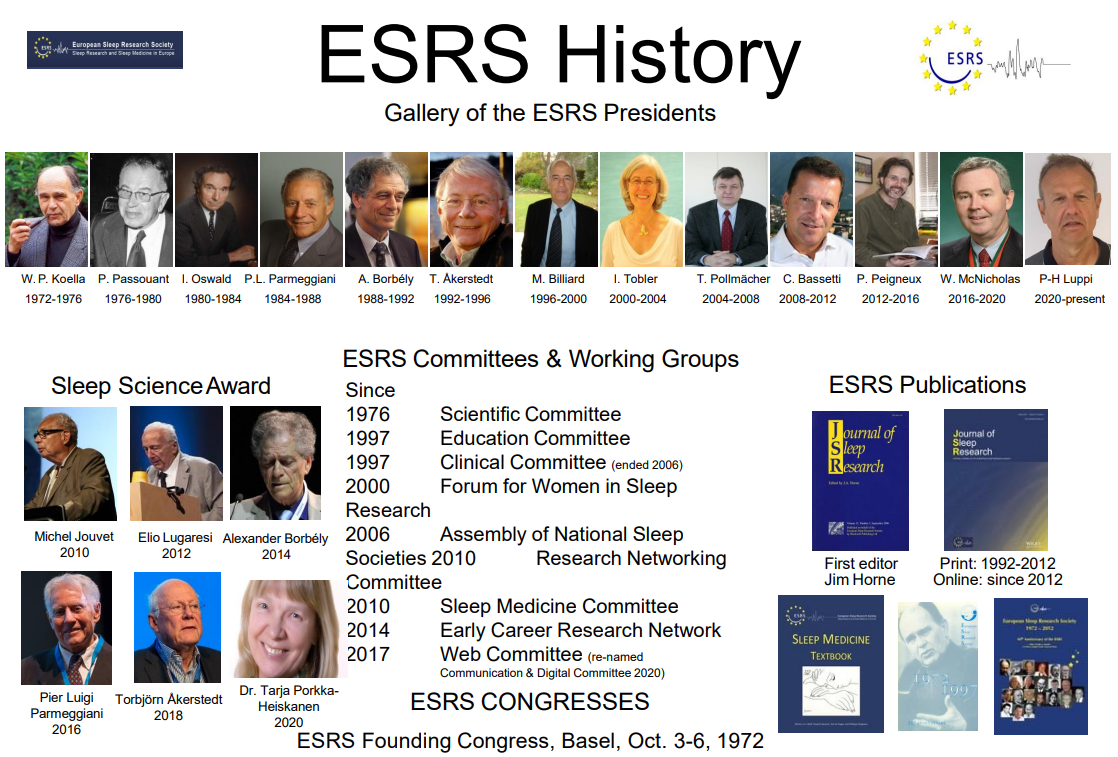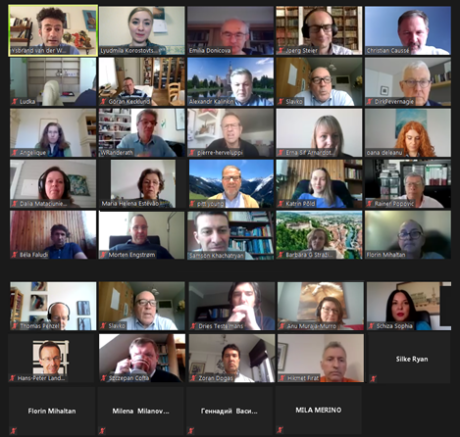Report of the Assembly of National Sleep Societies (on-line conference May 08, 2021)
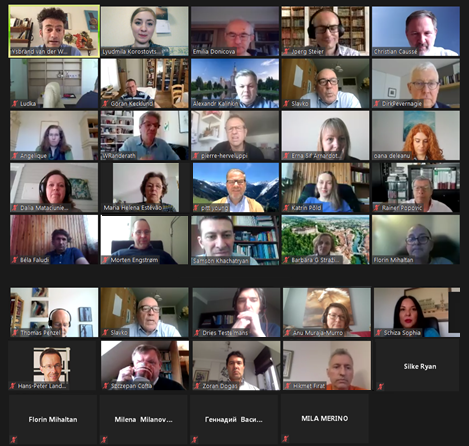
ANSS annual meeting 2021: again virtual
Due to the pandemic-related restrictions, the Annual 2021 ANSS meeting was held online again. Despite the burden of the virtual meetings in the last year, the representatives of the national sleep societies (NSS) were happy to meet online for a 4-hour session. In total, the meeting gathered 39 participants, including presidents or representatives of the national sleep societies of 29 countries: Armenia, Austria, Belgium, Bulgaria, Croatia, Estonia, Finland, France, Germany, Greece, Hungary, Iceland, Ireland, Italy, Lithuania, the Netherlands, Norway, Poland, Portugal, Romania, Russia, Serbia, Slovakia, Slovenia, Spain, Sweden, Switzerland, Turkey, UK.
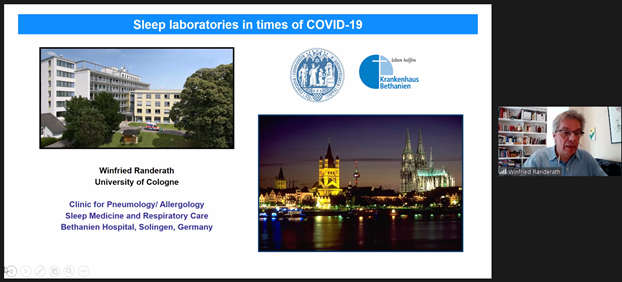
After introductory speech from the ANSS-EC president Ysbrand van der Werf (the Netherlands), the meeting started with the talk by the invited speaker Dr. Winfried Randerath on the role of sleep labs in times of COVID-19 (the Head Physician and Medical Director of the Bethanien Hospital, Clinic for Pneumology and Allergology, Germany). Starting with the question whether we need sleep labs during pandemic, Prof. Randerath gave a comprehensive overview of the evidence about sleep disorders in COVID-19 and the risk factors for the worsening of sleep. In theory, sleep-disordered breathing (obstructive sleep apnea, OSA) can contribute to the increased vulnerability to SARS-CoV-2 via systemic (inflammation, renin-angiotensin-aldosterone system activation etc.) and biomechanical factors (decreased lung compliance and airway collapse, in obese individuals etc.) leading to the higher risk of more severe course of the diseases, cardiac and respiratory complications, coagulopathy and unfavourable outcomes. The clinical data about the relation of OSA and COVID-19 are lacking, although the analysis of FinnGen study confirms higher risk of severe COVID-19 in OSA subjects (OR 2.37, Strausz et al. BMJ Open Resp Res 2021). In reality, the access to sleep services was significantly limited during the lockdown due to the closure of sleep-related labs and services (reduced by almost 80%, complex procedures completely stopped) and reallocation of the staff to other medical departments depriving individuals seeking for sleep-related help from medical care (data from ESADA study). The guidelines on the reopening of sleep services were developed including mitigations strategies involving infectious screening before and upon admission to the sleep lab, set-up and processing mitigation, cleaning and disinfection procedures and wider implementation of virtual visits and telemedicine services (Schiza S et al. ERJ 2020). With the normalization of the pandemic situation, sleep services should be restored fully. The current recommendations on PAP-treatment include the following:
- Do not stop OSA treatment
- Move symptomatic patients to separate rooms
- Limit the use of humidifiers as they can increase droplet and aerosol generation
- Use and regularly change the antimicrobial filters, in particular for non-vented masks
- Monitor closely SaO2 and PaCo2.
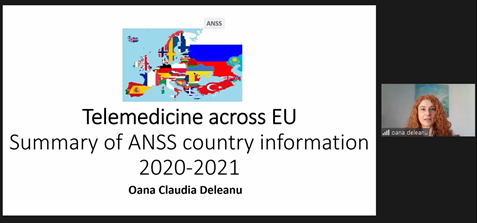
Following the American Academy of Sleep Medicine, which implements telemedicine services for the diagnosis and treatment of sleep disorders, some of the European countries also changed the telehealth-related regulation during pandemic in order to preserve the continuity of sleep health and maintain the health care standards.
The issues of telemedicine services during pandemic in EU were discussed in a more detail by Dr. Oana Deleanu (Romania) who presented the results of the ANSS survey about tele-health. In half of the EU countries e-consultations and tele-monitoring of CPAP compliance is available while insomnia treatment, follow-up visits and use of wearable devices are less common. In terms of legislation of telehealth in sleep field that results are rather confusing and discrepant compared to last year (2020) before pandemic. The assessment of potential benefits remains similar to the last year, while the evaluation of barriers look different: lack of user-friendly systems and tools seems to be more important in 2021, while the inability to evaluate and monitor the quality of telemedicine services is less important nowadays.
The telemedicine topic raised a lot of attention and discussion, resulting in the conclusion of an urgent need for a statement on telemedicine in sleep medicine.
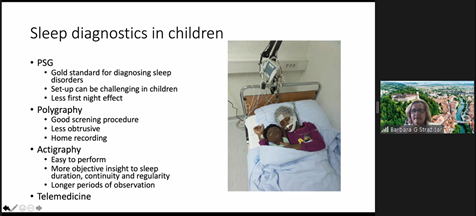
Dr. Barbara G. Stražišar (Slovenia) gave a brilliant overview of the pediatric sleep medicine, starting with the history back to the discovery of “rest-activity” cycles during infant sleep by Aserinsky an Kleitman in 1955 towards the current state of sleep in children during COVID-19 pandemic. The list of sleep disorders in children include bedtime resistance, problematic night awakenings, nighttime fears, sleep-disordered breathing, excessive sleepiness, parasomnias, behavioural problems and academic difficulties.
COVID-19 brought both negative and positive consequences to children’s sleep. The negative ones include increased sedentary behaviors, food consumption leading to weight gain; negative impact of illness and hospitalization on sleep; increased stress levels; reduced exposure to sunlight; flexible wake and sleep times, longer daytime naps; higher burden of technology use etc. On the other hand, due to less travelling to school/back home children get more opportunity for sufficient sleep, “evening types” can benefit from more flexibility in wake/sleep times, social isolation can enhance family bonds and reduce social and communication stress. The high-risk pediatric groups for sleep disorders include children with preexisting psychopathologies, neurodevelopmental states, adolescents who are distanced from their friends. All these factors results in the observed changes during pandemic: disrupted sleep schedules, significant delay in sleep timing, longer sleep duration , increase in sleep disorders, decreased sleep quality. Sleep pediatricians still have no answers to a number of questions which should be investigated in future:
- How do COVID-19 and associated physical distancing impact child and adolescent’s sleep over time?
- Are these changes temporary or will they result in a longer sleep disturbances at follow-up?
- Which COVID-19-related factors predict or maintain sleep disturbances in youth etc.?
The EU pediatric sleep network is working on getting answers to these and other questions.
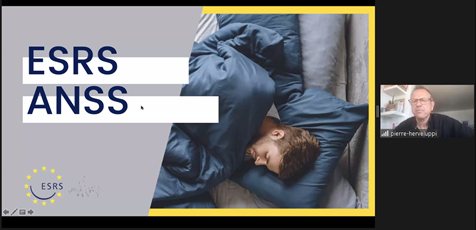
The traditional session with the ESRS Board representatives was devoted to the potential ways for enhancing the interaction between the ESRS and NSSs. The ESRS President, Prof. Pierre-Herve Luppi (France) presented the ongoing changes and restructuring within the ESRS which will help stronger interaction within the ESRS and with the other societies. The ESRS is planning to elaborate the approach to shared membership for the NSS members who are now considered associate members and not full ESRS members, so they do not have voting rights and other benefits. For this a Membership Task Force under the umbrella of the ANSS will be created. The ESRS is open for other suggestions from the NSS side regarding the content and modification of the ESRS website, collaboration on the ESRS examination in order to approve it as the local sleep exam etc.
In the course of this topic, Dr. Lyudmila Korostovtseva (Russia) presented the results of the ANSS survey regarding the interest in shared membership among the NSSs. In total, half of the societies would be interested in obtaining the shared membership if it does not lead to the increase in their membership fees. Seven societies are ready to pay extra fees for the shared membership. Three societies gave negative answers, while two need more time and information before taking the decision. The main obstacles preventing the NSS members from the shared membership are: the potential increase in the fees, unclear benefits, and the preference of local activities in local languages. However, some points are attractive and could increase the interest of the NSS in obtaining shared membership. These include: the opportunity for networking and collaborative projects with the ESRS, joint activities during the conferences, access to the ESRS newsletter, Journal of Sleep Research, online training courses, educational programs, reduced fees for the congresses etc. It should be also noted that the Hellenic Sleep Society will be hosting the next ESRS congress 2022 in Athens.
Following Prof. Luppi’s message Prof Dirk Pevernagie (Belgium) presented a strategic plan of the reorganization of Sleep Medicine Committee and a call for new members to this ESRS Committee which is open till 31 May 2021.
Sponsorship Presentation
During the “Meeting sponsors” session Philips and Bioprojet presented their recent developments. Dr. Gregory Frank (Philips) focused on the pandemic challenges, while Christian Causse (Bioprojet) reported recent results of pitolisant studies.
Two more reports considered activities in which ANSS is involved.
Dr. Erna Sif Arnardottir presented the ongoing large project “Sleep Revolution” supported by the Horizon 2020 EU grant and led by Reykjavik University. It involves the ESADA network, expert societies ESRS and ANSS and is supported by other professional societies (ERS, deCODEgenetics) and industry partners. The first results obtained within the project show high quality data obtained via self-applied somnography setup in pediatric cohort. The development and validation of mobile tools for sleep assessment is ongoing. Via elaborating workpackages from 1 to 12 the team is aimed at improving sleep health and personalized, patient participatory care for sleep disorders as well as cost reduction and wide dissemination across Europe which will have a revolutionary impact on sleep medicine.
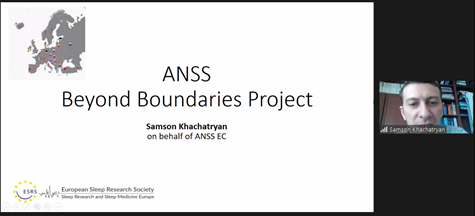
Dr. Samson Khachatryan presented the update on the ANSS project “Beyond boundaries” aimed at promotion of sleep medicine and sleep research in Europe and beyond EU space, by expanding and harmonizing knowledge, skills and attitudes among sleep professionals. The project was approved by the ESRS. The first pilot step of this project, which included meeting local healthcare and other authorities with role in sleep medicine development, round table discussion with them and a one-day teaching seminar, was completed in Armenia (Yerevan) in October 2019. The COVID-19 pandemic interrupted the development of the project but now, with the stabilization of the situation, the ANSS EC is preparing for restoration and renewal of “Beyond boundaries”.
NSS Updates
Last but not least, few updates and announcements were made by the NSS. The British Sleep Society (BSS) has recently merged with the British Dental Sleep Medicine Society under the BSS. The Slovak Sleep Society has recently got accreditation from Ministry of Health for one year course in Somnology as sub specialty, which is a promising achievement for further development of sleep medicine. Four new presidents of the NSS were elected in 2020-2021: Prof. Dries Testelmans (BASS, Belgium), Prof. Thomas Penzel (DGSM, Germany), Dr. Põld (ESMA, Estonia), Dr. Ryan (ISS, Ireland). To address other urgent topics, the ANSS may need to establish shorter, intermediate online meetings during the year which can involve either all Assembly or separate national sleep societies for discussing local issues of interest.
ANSS activities will help to reinforce the interaction between national sleep societies and consolidation between sleep professionals.

